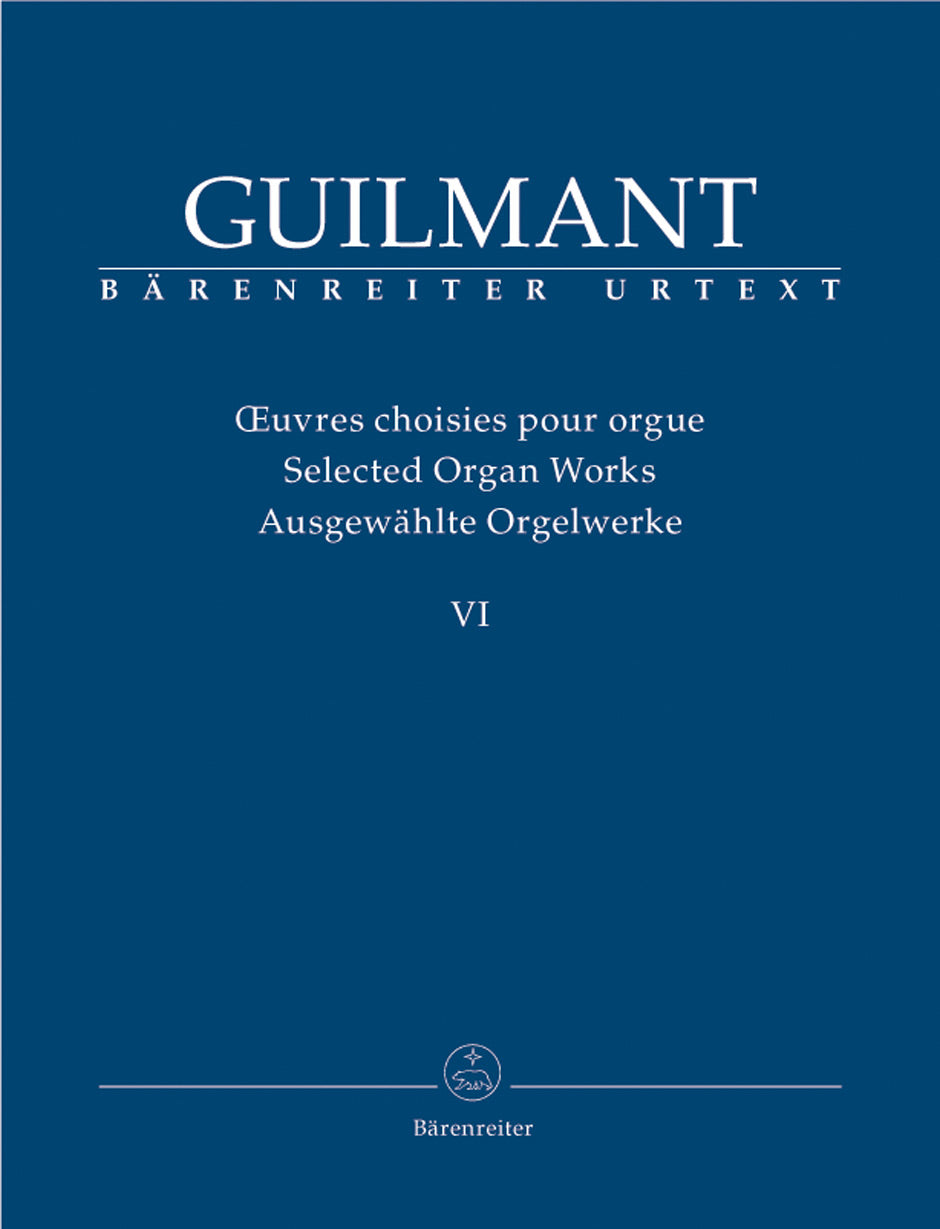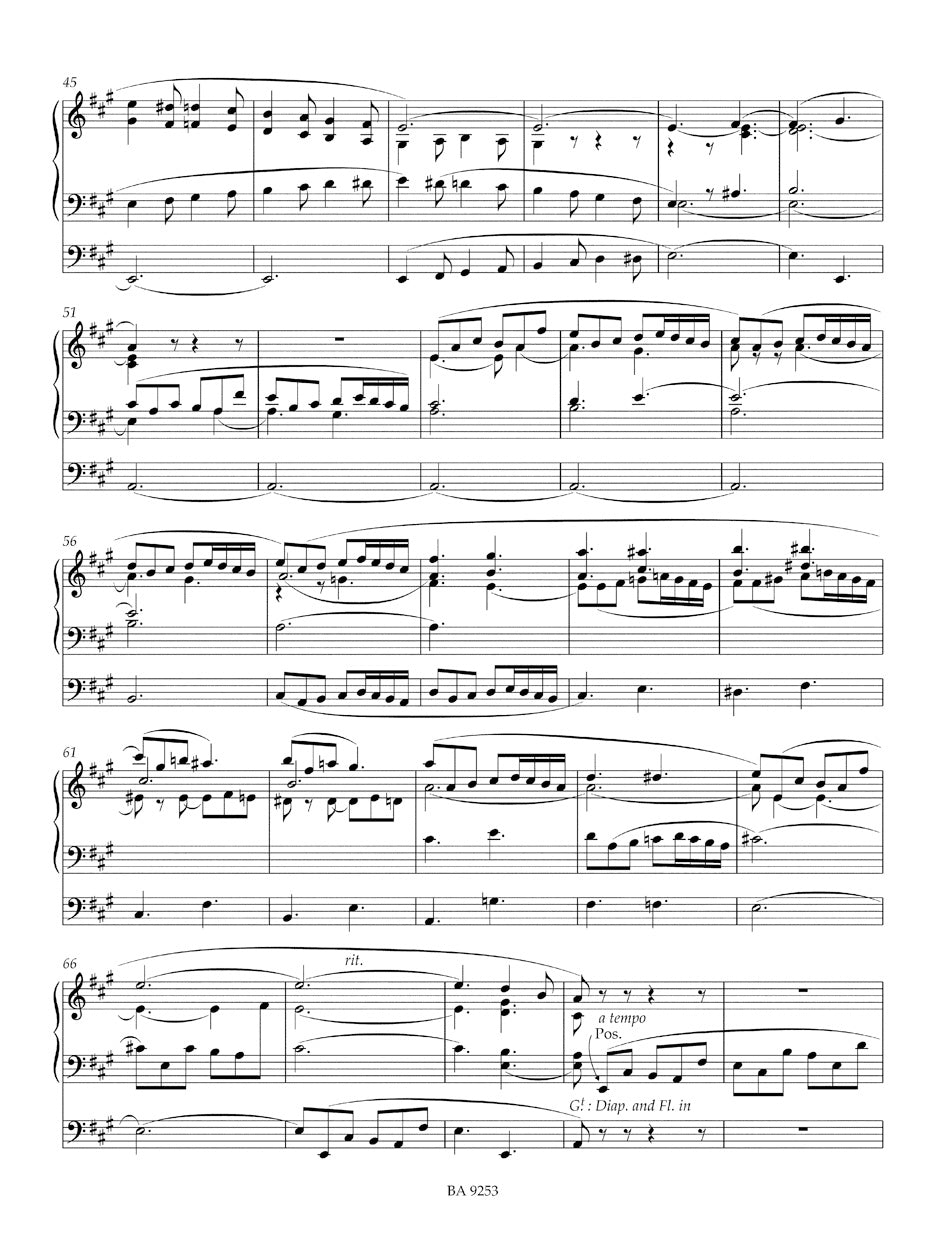Guilmant: Concertante and Character Pieces 2
Selected Organ Works Volume 6
In stock and typically ships within 1 business day.
- Composer: Alexandre Guilmant (1837-1911)
- Instrumentation: Organ
- ISMN:
- Size: 9.1 x 11.8 inches
- Pages: 74
- Urtext / Critical Edition
Description
As with previous volumes - Volume VI of the Urtext Edition of Alexandre Guilmant's works presents a practical edition of selected works which have become famous in the international organ repertoire. The character pieces offer an insight into Guilmant's lively imagination and performing practice. with moderate technical demands, clarity of form, these works are ideal for both church and concert performance. Short text: Guilmant‘s eight organ sonatas are 'classics' in the French Romantic organ tradition and belong to the permanent repertoire of organists everywhere. His late organ sonatas in particular draw on the idiom of Beethoven, Mendelssohn and Schumann while paying homage to the Belle Époque.
- First Urtext edition of Guilmant's organ works
- Well-known pieces in a practical performing edition
- Based on the latest research
- Detailed foreword (Ger/Eng), Critical Commentary (Ger/Eng) with list of sources
Works:
- Première Méditation, No. 1 from Pièces dans différents styles (livraison 6), Op. 20
- Caprice, No. 3 from Pièces dans différents styles (livraison 6), Op. 20
- Madrigal from L'Organiste Pratique (livraison 7), Op. 52
- Prière, No. 2 from Pièces dans différents styles (livraison 2), Op. 16
- Fantaisie pour l'orgue, No. 5 from Pièces dans différents styles (livraison 5), Op. 19
- Prière et Berceuse from Pièces dans différents styles pour orgue (livraison 15), Op. 71
- Communion from Pièces dans différents styles (livraison 1), Op. 15
- Pastorale from Pièces dans différents styles (livraison 16), Op. 72
- Fantaisie sur deux Mélodies Anglaises, Op. 43
Publishers use a lot of words to describe what they sell, and we know it can be confusing. We've tried to be as clear as possible to make sure you get exactly what you are looking for. Below are descriptions of the terms that we use to describe the various formats that music often comes in.
Choral Score
A score for vocalists that only contains the vocal lines. The instrumental parts are not there for reference. Generally, cheaper than a vocal score and requires multiple copies for purchase.
Facsimile
Reproductions of the original hand-written scores from the composer.
Full Score
For ensemble music, this indicates that the edition contains all parts on a single system (there are not separate parts for each player). In larger ensembles, this is for the conductor.
Hardcover
Hardbound. Generally either linen-covered or half-leather.
Orchestral Parts
Similar to a wind set, this is a collection of parts. In the case of strings, the numbers listed are the number of copies included, though generally these are available individually (often with minimum quantities required).
Paperback
When publishers offer multiple bindings (e.g. hardcover) or study scores, this is the "standard" version. If you're planning to play the music, this is probably what you want.
Performance / Playing Score
A score of the music containing all parts on one system, intended for players to share. There are not separate parts for each player.
Set of Parts
For ensemble music, this indicates that there are separate individual parts for each player.
Solo Part with Piano Reduction
For solo pieces with orchestra, this is a version that contains a piano reduction of the orchestra parts. For piano pieces, two copies are typically needed for performance.
Study Score
A small (think choral size) copy of the complete score meant for studying, and not playing. They make great add-ons when learning concertos and small chamber works.
Vocal Score
A score prepared for vocalists that includes the piano/organ part or a reduction of the instrumental parts.
Wind Set
For orchestral music, this is a collection of wind and percussion parts. The specific quantities of each instrument are notated.
With Audio
In addition to the printed music, the edition contains recordings of the pieces. This may be an included CD, or access to files on the internet.
With / Without Fingering (Markings)
Some publishers prepare two copies - a pure Urtext edition that includes no fingering (or bowing) suggestions and a lightly edited version that includes a minimal number of editorial markings.





